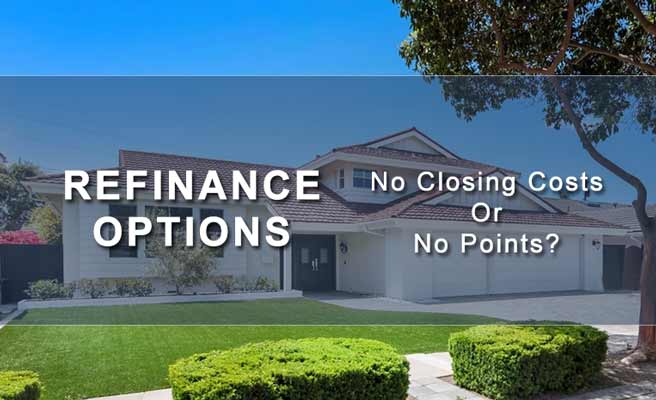
Should I Refinance with No Closing Costs or No Points?
When homeowners are looking to refinance, a common question is “Should I refinance with the no closing cost or no points option.” It may seem like an easy decision, but before deciding if this is the option you’ll choose, there are some things you need to know. So, the following information will take an in-depth look at refinancing with no closing cost or no points and help you decide if it’s a good choice for you.
What Are Closing Costs?
Closing costs are expenses associated with buying or refinancing a property. These costs are in addition to the property’s purchase price and may include homeowner fees, mortgage points, lender fees, and other third-party fees.
Homeowner Fees
As you may know, homeowners are responsible for numerous costs, including homeowner’s insurance, property taxes, and, sometimes, homeowner association fees.
Mortgage Points
During the closing process, some lenders give the option to pay mortgage points which are also known as discount points. These are fees that are paid directly to the lender in exchange for a lower monthly payment and interest rate. When a homeowner chooses to buy mortgage points, it’s commonly referred to as “buying down the rate.”
For each point purchased, the interest rate is generally lowered by 0.50%. So, buying one point on a 4% interest rate will reduce it to 3.50% over the life of the loan.
Lender Fees
Lenders charge fees for processing your application and originating the loan. Such fees vary depending on the type of loan and the lender.
Third-Party Fees
Lenders work with other service providers to obtain the mortgage, such as title companies, credit services, and appraisers. Closing costs always include these fees.
What Does It Mean to Refinance With No Closing Costs?
First, there are always closing costs. So, choosing this option doesn’t mean that all closing costs are forgiven, or you won’t end up paying them. It simply means that these costs are spread among other areas of expense in your repayment plan.
A refinance with no closing cost allows the homeowner to avoid paying the fees at closing in a lump sum. Instead, they are either rolled into the monthly mortgage payment or exchanged for a higher interest rate for the life of the loan.
For example, a homeowner may qualify to refinance at a rate of 3.00% or 3.5% for “0” points or a rate of 3.875% for no points and no closing costs. When the borrower takes the higher interest rate, they may receive a closing cost credit that pays for the 1 point that’s charged or all of the closing costs, known as a lender credit.
Advantages of A No-Closing-Cost Refinance
The biggest advantage of this option is that a homeowner can refinance with no cash paid upfront. Furthermore, if a homeowner is currently paying interest rates of 4% or 5%, refinancing at a lower rate not only results in a lower monthly payment but it usually saves money over the life of the loan.
Disadvantages of A No-Closing-Cost Refinance
As we mentioned, you will always pay closing costs. When you don’t pay these costs upfront, you will pay more over the loan’s life. For the sake of an example, let’s say you take a $4,000 lender credit on a $200,000 loan. Essentially, you’re rolling an extra $4,000 into your home loan. At a 4% interest rate, this means you will actually pay an additional $2,900 in interest over the 30-year term.
The Bottom Line
As far as a no closing cost refinance goes, there are advantages and disadvantages. If you can afford to purchase points and the refinance rates are already low, this can be an excellent investment if you plan to stay in the home past your break-even point. Alternatively, if you don’t have the additional funds upfront, it’s not something that will make or break you. Knowing what you can pay upfront combined with your long-term goals will help decide which option is best for you.

Scott is a Business Development Manager at 1stNWM. He blogs about home loans, personal finance and lives in Orange County, CA. He feels good about sharing his expertise and real world stories of successful real estate transactions. when he’s not at work, he is with his bestie, a four-legged furry and often sloberring Saint Bernard, Wyatt.